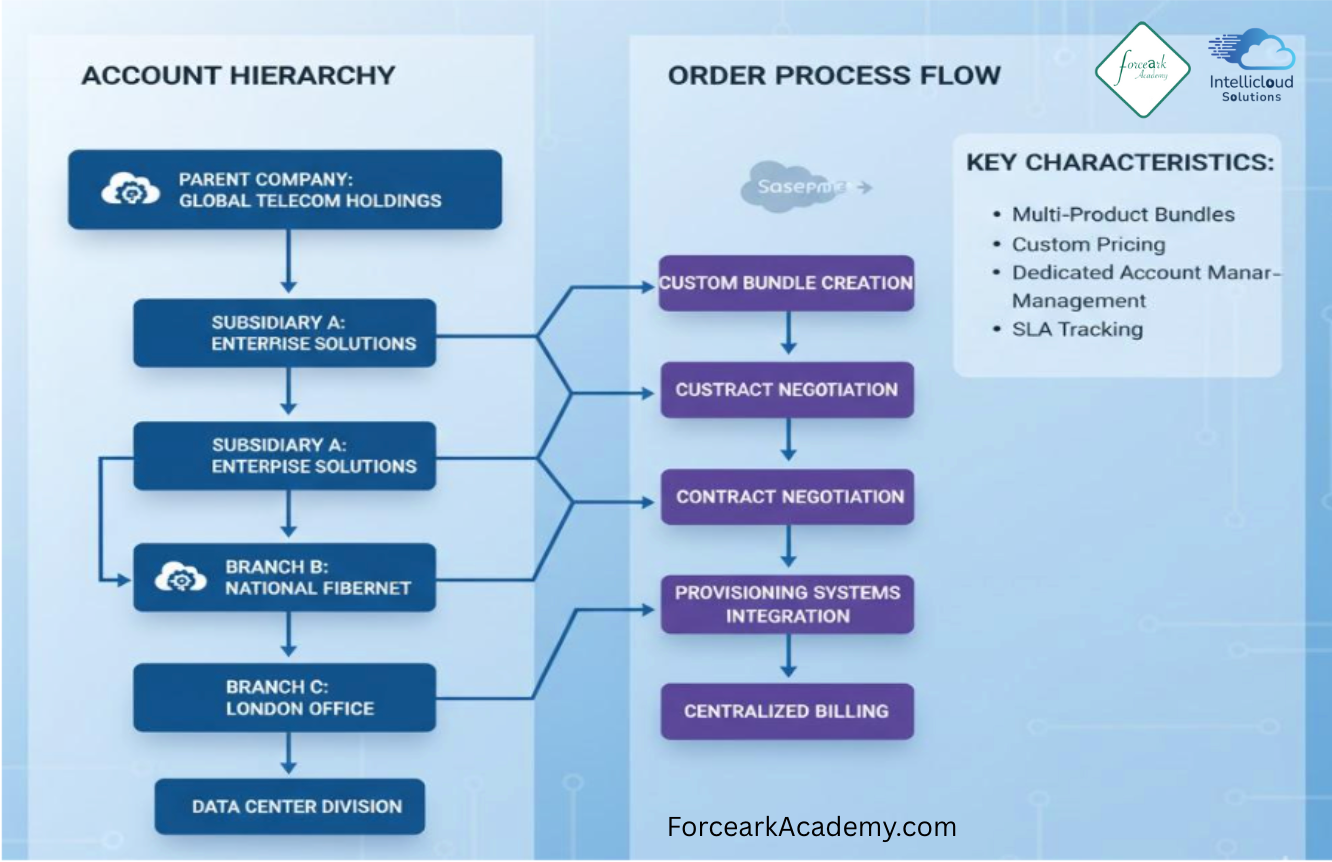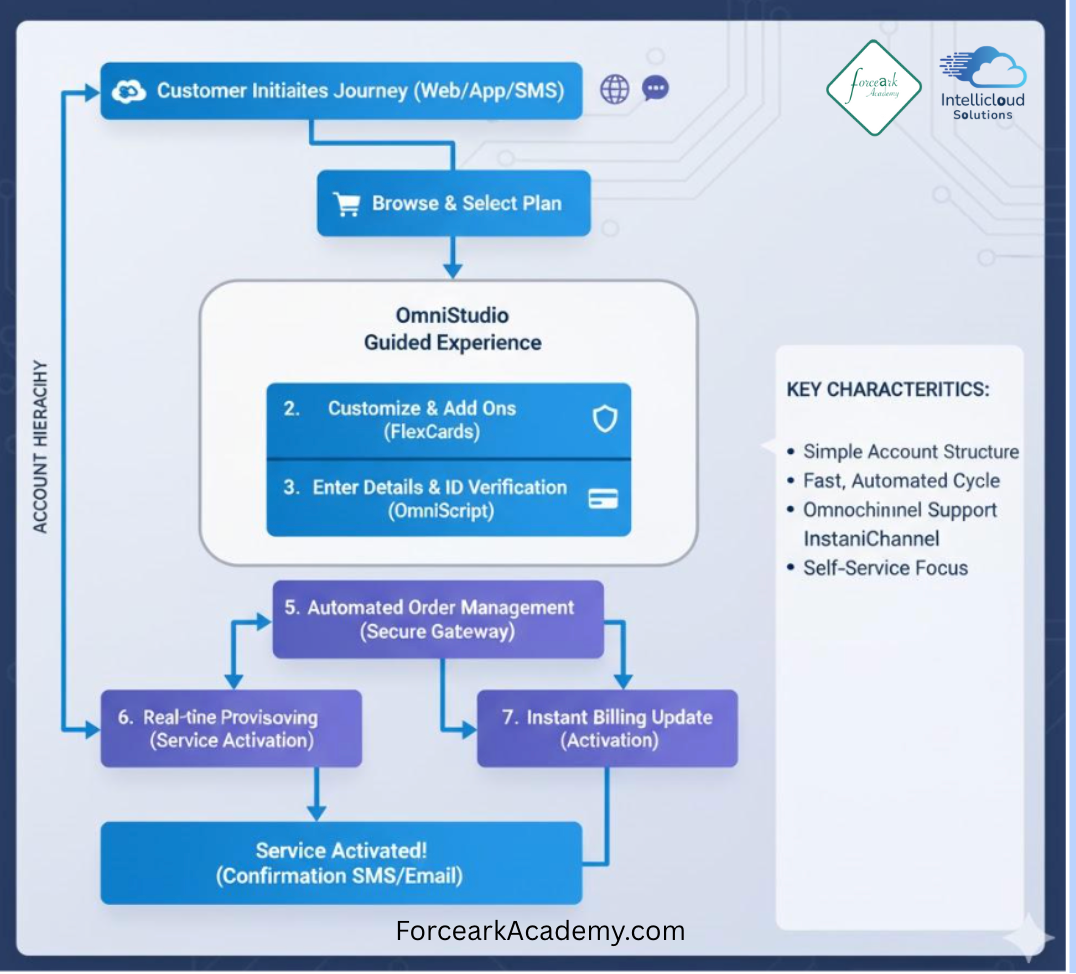There are no items in your cart
Add More
Add More
| Item Details | Price | ||
|---|---|---|---|
Salesforce Communications Cloud (Comms Cloud) is a specialized, industry-specific solution tailored for sectors like telecom, media, and utilities. It empowers organizations to streamline complex core processes—including order management, provisioning, customer engagement, and billing—all within a single, unified platform.
In today's hyper-competitive market, understanding the divergence between B2B (Business-to-Business) and B2C (Business-to-Consumer) scenarios is critical. While both ultimately aim for stellar customer experiences, they differ dramatically in complexity, structural needs, sales cycles, and the underlying technology required to support them.
This blog explores exactly how Comms Cloud skillfully adapts to these differences, delivering tailored, high-impact solutions for both sophisticated enterprise and fast-moving retail customers.
B2B customers are typically large organizations with highly specific, complex requirements. The processes they engage in within Communications Cloud differ significantly from B2C due to the sheer scale, customization, and deep relationship management involved.
Example Use Case:
A telecom provider offers a custom fiber and cloud package to a national retail chain, requiring centralized billing for 50 store locations and dedicated, SLA-backed account support.
Here's an image depicting a B2B Account Hierarchy and Order Process:

B2C customers are individual consumers. The B2C process prioritizes speed, convenience, and automation to handle a massive volume of simpler transactions instantly.
Key Characteristics for Consumer Engagement:
Example Use Case:
A telecom operator provides prepaid mobile plans where a customer can browse options, select a plan, pay, and activate their service instantly via a mobile self-service portal.
Here's an image depicting a B2C Self-Service Journey Flow:

The table below highlights the fundamental differences that shape the implementation strategy for each segment:
| Aspect |
B2B (Enterprise) |
B2C (Consumer) |
| Account Structure |
Multi-level hierarchies with parent/child relationships |
Single account per customer |
| Order Complexity | Large-scale, custom bundles, multi-product orders | Single or predefined bundles, rapid processing |
| Pricing | Customized, negotiated rates, complex discounts | Fixed, standardized pricing |
| Sales Cycle | Longer, driven by negotiation and customization | Short, often instant and automated |
| Customer Engagement | Dedicated account teams, SLAs, relationship focus | Self-service journeys, automation, omni-channel |
| Integration Needs | ERP, provisioning systems, SLA tracking | CRM, digital channels, omni-channel experience |
The brilliance of Salesforce Communications Cloud lies in its foundational architecture, which is inherently flexible enough to handle the unique demands of both B2B and B2C models simultaneously.
Successfully navigating the differences between B2B and B2C is not just about having two separate systems; it's about leveraging one platform that can strategically tailor processes to each customer type.By designing distinct journeys and utilizing the scalable architecture of Salesforce Communications Cloud, businesses can achieve faster order cycles, significantly higher customer satisfaction, and reduced operational complexity across their entire customer base.
This flexibility makes Comms Cloud a powerful and indispensable choice for any modern telecom, media, or utility provider.
Ready to learn this awesome feature, contact ForcearkAcademy!